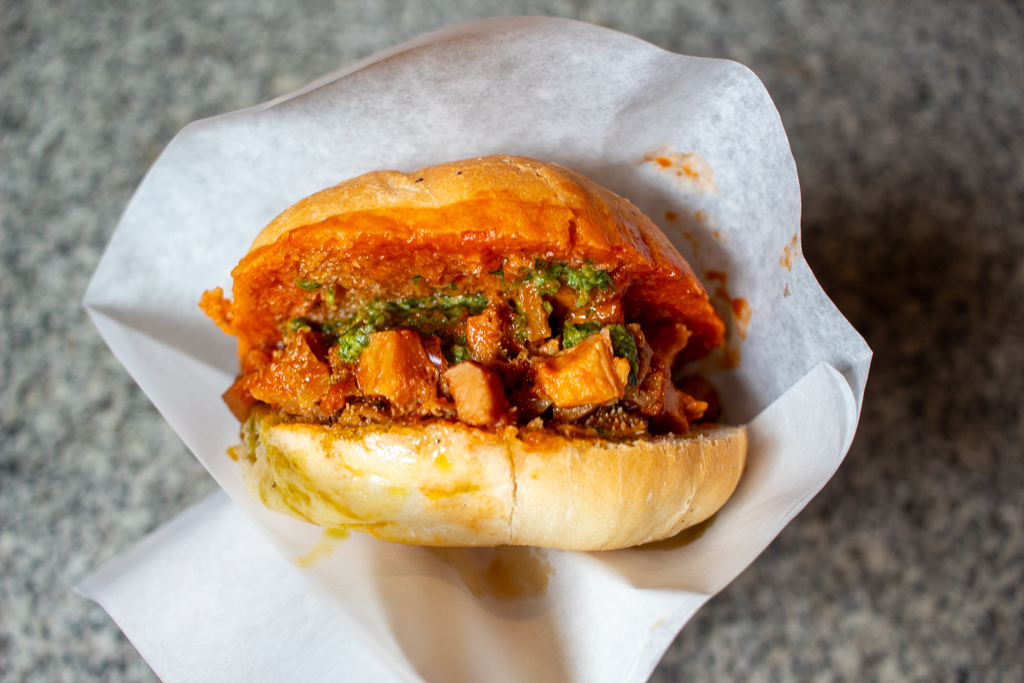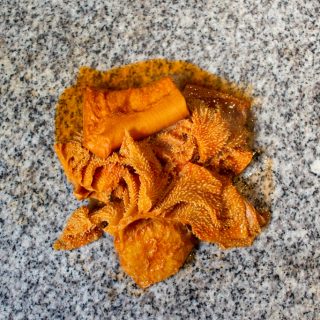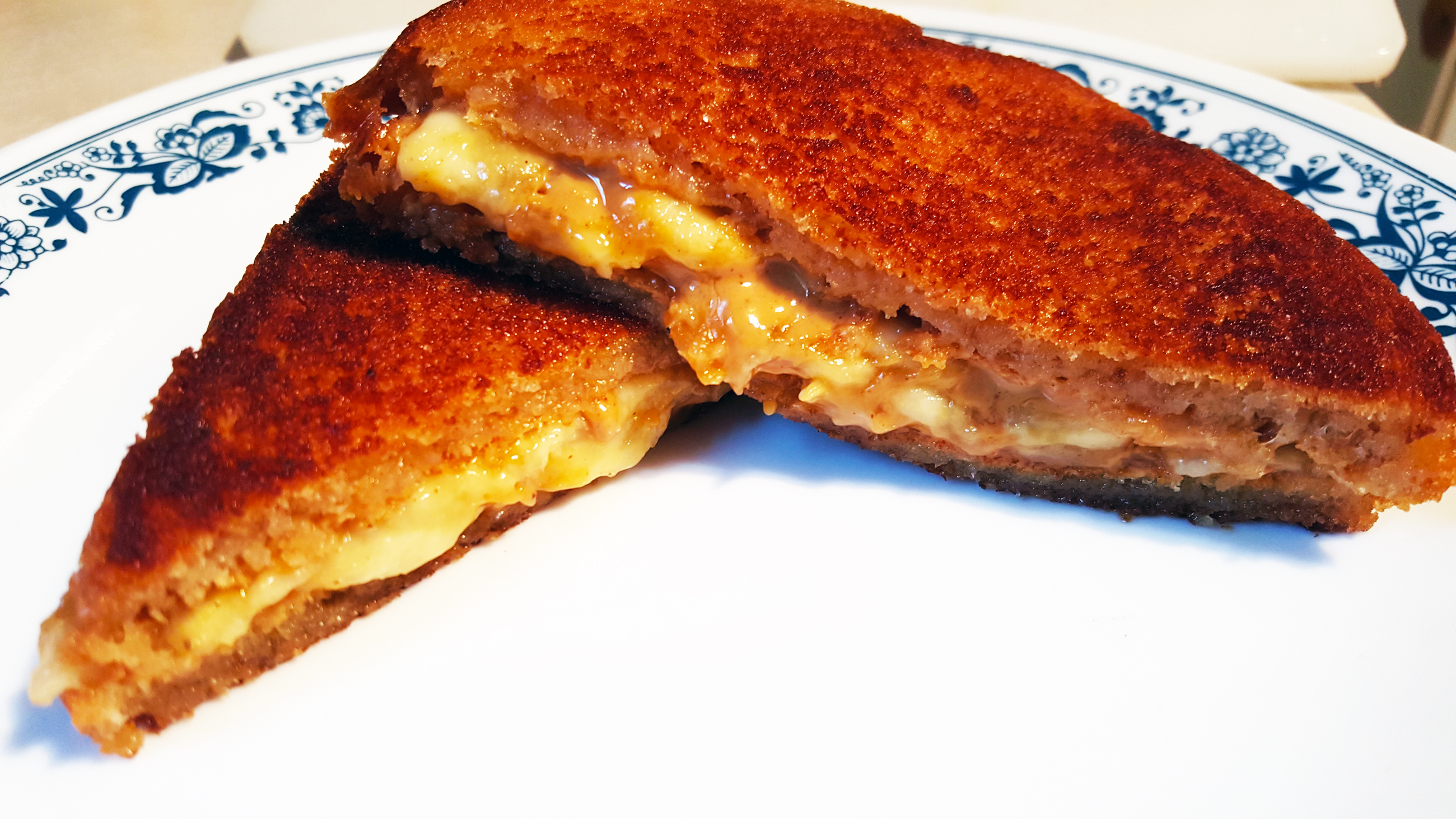Lampredotto? Maybe Not Though
Cow digestion is a complicated and, frankly, kind of disgusting process. It’s not the kind of thing you generally want to open with when you’re writing a food blog and yet, here we are. See, cows are ruminants. Ruminants, as part of their digestion, initially swallow the leaves or grasses or whatever green stuff it is they’re eating into a first stomach chamber that is called the rumen. The rumen is a kind of fermentation vessel, where microbial processes are carried out by beneficial bacteria to begin to break down the food the cow has eaten.
Then, when the cow’s gut microbiome have had their way for a bit, and the cow is resting and ready for a little jaw exercise, the cow will chew on this already-swallowed food for a while. This is made possible by a second stomach chamber called the reticulum. The reticulum sits between the rumen, the esophagus, and the third stomach chamber called the omasum. Its fine honeycombed structure allows it to pass smaller food particles on to be further digested, while larger ones are squeezed back up into the esophagus and on back up to the cow’s mouth, where they can be broken down a bit more. This is what is meant by “chewing the cud”–yes, cud is cow barf.
But once that mashed-up green mass has gone through enough mastication, fermentation, and regurgitation, it eventually makes its way into that third stomach, the omasum, with its absorptive paper-like folds, and from there into the fourth stomach, the abomasum, where the rennet enzymes used to curdle milk into cheese are produced, and then through the small intestine, the large intestine, and finally out the colon–which is not, as we learned last fall, the bung–and deposited in large smelly piles back onto the grass from whence it came.
So why are you talking about this, Jim, and why is this article not named The Miracles of Cow Barf and Poo? Because we’re here to talk about tripe, kids. Tripe is a type of offal that is made from the stomach tissue of, usually, a cow. The organ is washed, and boiled, and washed and boiled again, and bleached with hydrogen peroxide, until every last bit of decaying food matter–tragically interrupted in pursuit of its final form as cow poo–has been flushed from the flesh. The resulting tissue is nearly colorless and, presumably, far less foul.

Because a cow has 4 stomachs, there are 4 different kinds of tripe. Tripe made from the first stomach, the rumen, by far the largest of the stomachs and the most common form of tripe, is called flat tripe, or blanket tripe.

Tripe made from the second stomach, the reticulum, has a complicated and delicate structure of holes that give this tripe its characteristic honeycomb shape–the tripe is, of course, called honeycomb tripe as a result, and is perhaps the most popular form of tripe.

Tripe made from the third stomach, or omasum, is less common than either blanket tripe or honeycomb tripe, but it can be found. This tripe features thin sheetlike ciliated masses depending from the organ wall like pages from a bookbinding. This shape gives it its name; it is called, variously, book tripe or bible tripe or even leaf tripe.

Tripe made from the fourth stomach, the abomasum, is rarer yet. Variously known as reed tripe or maw it is not, despite what my photo above may indicate, actually invisible. I went to Korean markets, Filipino markets, Chinese markets, small butchers, large packing companies. I called even more places than I went. I emailed management at Nonna’s in the west loop, whose Lampredotto sandwich was praised by Mike Sula in the Reader a few years ago (but isn’t on the menu anymore), to try and learn where they sourced it.
Maybe I just went to the wrong places or talked to the wrong people. I found blanket tripe and honeycomb tripe and book tripe. I found beef small intestine, and beef tendons. I even found something called “mountain chain tripe” which consists of bands of muscle taken from the rumen, more meatlike than other kinds of tripe.

I know it’s out there. It must be, I’ve seen it on menus. Several Chinese restaurants in and around Chicago’s Chinatown serve appetizers featuring beef “maw,” which generally refers to the abomasum though I suppose it’s just possible it could mean something else in this case. Dancen, a restaurant featuring Korean “bar food” in my old neighborhood of Lincoln Square, at one time listed beef abomasum in the Grill section of their menu, though the current menu does not feature it.




Perhaps it is due to fears of mad cow disease, or the glandular content of the organ, or perhaps abomasum is in demand by a thriving pet food industry, or the cheesemakers of Wisconsin have the local supply on lock. Quite possibly this is just one of the squidgy bits that many Americans are just too squeamish to eat, so nobody bothers to carry it. Whatever the reason, I simply could not find any abomasum to make this Florentine street food sandwich called Lampredotto.
So we improvise.
Descriptions of reed tripe say that it has leaves, though less pronounced than those in book tripe, and that there are two distinct types of flesh, a fattier, stronger-flavored section and a darker, milder one. To try and replicate this I used 2 different types of tripe in my mock lampredotto–the omasum or book tripe, as the tripe that is nearest the abomasum in function and shape, and the mountain chain tripe for the flavor and textural contrast that abomasum would usually have. Here’s how I prepared it:
Mock Lampredotto
Ingredients
- 1.5 lbs mountain chain tripe
- 2 lbs book tripe
- 2 each large yellow onions unpeeled, cut in half
- 5 stalks celery roughly chopped
- 3 each carrots unpeeled, roughly chopped
- 1 28 oz can tomato puree
- 1/2 bunch Italian flat-leaf parsley main stems removed
- 2 quarts beef stock
- 1 quart water
- salt and pepper to taste
- Bread rolls
- Salsa verde
- Chilies and/or chili oil
Instructions
- Mix together beef stock, water, tomato puree in a stockpot
- Add onions, carrots, celery, and parsley and bring to a simmer
- After several minutes, add the mountain chain tripe. Simmer for 2 hours
- Strain the stock with a spider, discarding the vegetable matter and returning the mountain chain to the stock.
- Season stock, add book tripe and simmer for 90 more minutes
- Chop tripe and serve in saltless Tuscan bread rolls with salsa verde and Calabrian chilies or chili oil
The stock that I made for this ended up being thicker than many I’ve seen but it was quite delicious, and there was far more of it than was needed. I used unpeeled vegetables in large chunks simply because it is a common practice when making a stock, to add color and flavor. It has the added benefit of making them easier to remove later.

The book tripe really only needs an hour or two of simmering, while the mountain chain tripe needs more of a low slow cook, so I gave the mountain chain tripe a couple hours more than the book tripe. By the time the stock had simmered for 3 or 4 hours, it was quite dense and rich, and both types of tripe very tender.

The Lampredotto vendors of Florence serve their sandwiches in the saltless bread rolls of the Tuscany region. To try and recreate this bread, I turned to my copy of Carol Field’s The Italian Baker. The Tuscan bread recipe in this book makes one large round loaf, and the dough is wet and sticky (~71% hydration), but I was able to form it into rolls by hand rolling it into long ropes and knotting it.

When done properly, this knotting technique turns out rolls with a sharp 5-pointed Kaiser roll type of shape. Clearly I need to practice but there were a couple that didn’t look too bad.

Why does the bread of Tuscany use no salt? There are competing theories, some of which call into question the character of Tuscans, so I won’t repeat them here. I will say that when a bread is given a nice crust either by the initial bake or by a subsequent toasting, and when it is drizzled with a nice extra virgin olive oil and served with strong-flavored ingredients like dried olives, prosciutto, or stuffed hot peppers, you hardly notice the lack of salt in the bread itself.

And strong flavors are at the core of this sandwich. In addition to the rich stock and the tripe that has simmered in it, Lampredotto is generally served with a set of powerful condiments. Central to this is Italian-style salsa verde–closer to a chimichurri than the Mexican salsa verde more familiar to many of us in the US, but different yet, the Epicurious recipe I used is peppery and herbal from Italian parsley, briny from capers and cornichons, bright from wine vinegar, with a deep and filling umami flavor provided by anchovies. Florentine street vendors also add a hit of capsaicin to their Lampredotto sandwiches via a drizzle of Calabrian chili oil, or even an Italian chili paste.



So let’s take a look at that tripe after simmering it in our beef and vegetable stock.

Now of course this is not what reed tripe would look like when it’s ready. The sandwich is called Lampredotto because of the lamprey-like appearance of the abomasum–the vendor pulls it from the broth as a thick tube and snips off a small section, chopping it up on a cutting board before adding it to the bread roll. Even after chopping, my Lampredotto filling clearly, distinctively consists mainly of book tripe.

Assembly is simple; we start with the bottom half of the bread roll

We add enough stewed tripe to cover it in a thin layer. Or possibly a slightly thicker layer than we absolutely need to use.

We add salsa verde and chili oil

Place the top half of the bread roll and voila! Lampredotto! Or in this case, mock lampredotto.

So how is it? There’s quite a bit going on in this sandwich–the flavor of the bread is of course fairly muted, and the tripe is not as assertive as I imagine the actual abomasum would be, though the simmering liquid clinging to the tripe’s has flavor to spare, rich with gelatin and tomato. The herb-and-vinegar of the salsa verde cuts through it neatly though, punctuated by a chili oil exclamation point. I could wish for a little more acid in the salsa verde (which I could solve by adding a little more vinegar) or a little actual salt in the bread (which I could solve by using different bread). Overall though this is a pretty decent sandwich, marred mostly by the fact that it is using the entirely wrong meat.
There is something missing though. Take a look at this Youtube video of an actual Lampredotto vendor in Florence. Pay attention around 0:36.
I thought the sandwich I made was surprisingly neat. The vendor dips the top half of the bread roll directly into the still-simmering stock he pulled the tripe from, partially soaking the cut side. What was missing in my earlier attempt, besides actual reed tripe, was an even heftier dose of that intense beef-and-tomato stock.

My stock does seem to be thicker/richer/more tomatoey than what the vendor is using, and it both soaks into the bread and clings to its surface. Fashioning a wrapper from a folded piece of wax paper, I was able to serve and eat this wet and dripping sandwich relatively mess-free.

This is the essence of street food, quickly assembled to be quickly eaten out-of-hand, on the go, a hot, juicy, dripping handful of cheap but delicious food, slathered with condiments, its only significance to bring a fleeting few moments of joy into someone’s life. I liked my mock lampredotto, and I certainly hope to try the real thing one day!


I like sandwiches.
I like a lot of other things too but sandwiches are pretty great












Recent Comments